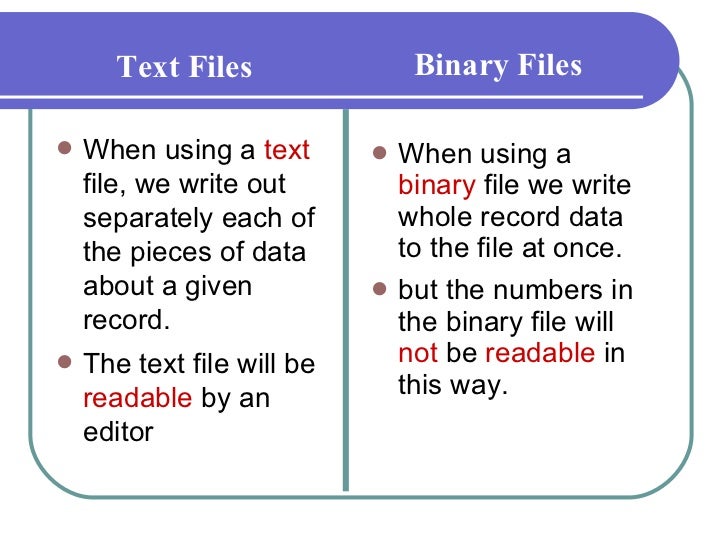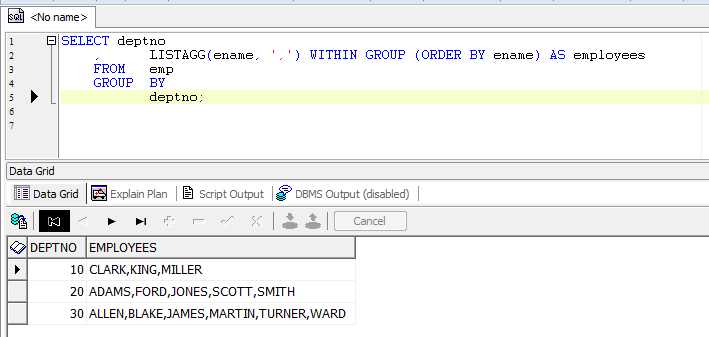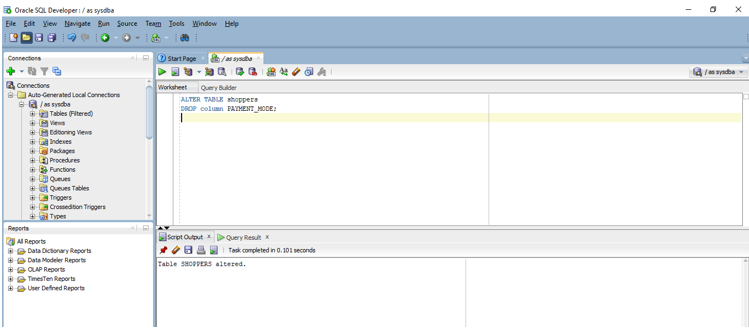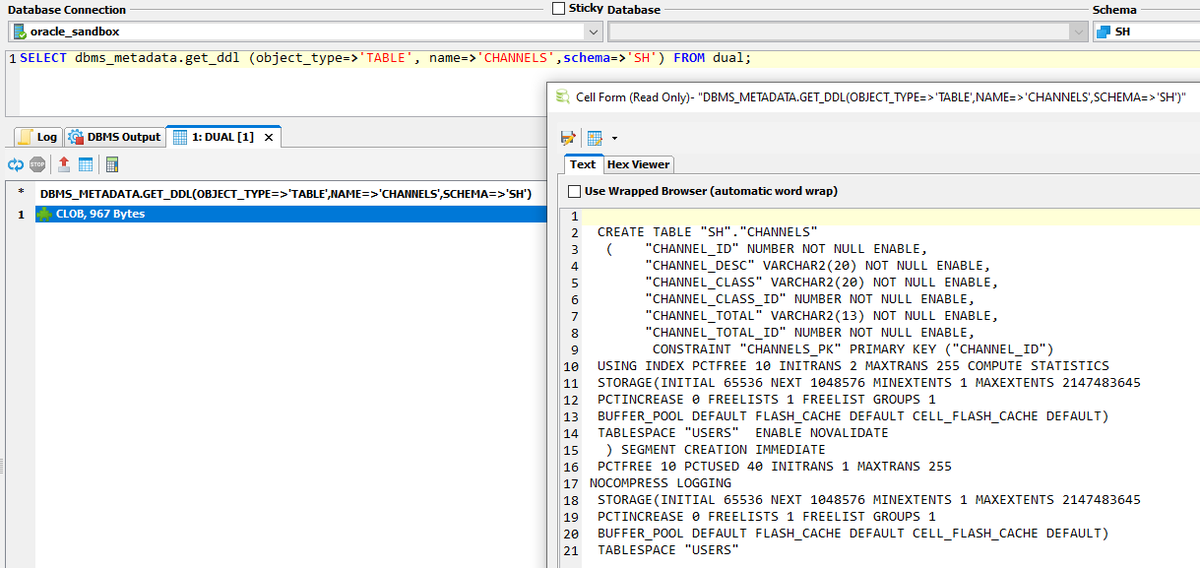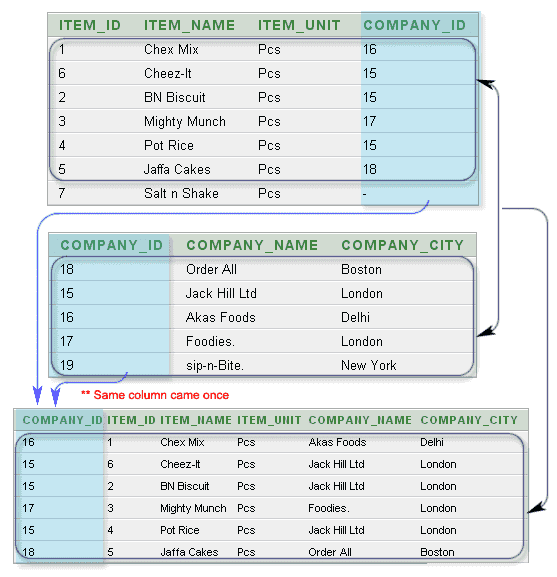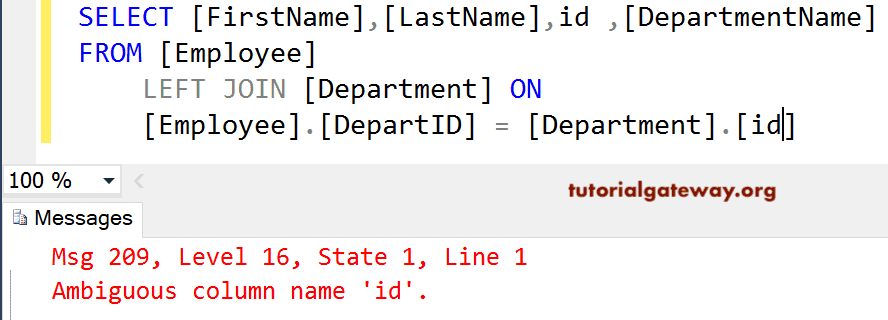In some uncommon circumstances, the configuration and cleanup scripts should know the situation into which the package deal deal is being installed. An instance of this can be a package deal deal that makes use of C code and creates two shared object/DLLs. Usually, the item that's dynamically loaded by R is linked towards the second, dependent, object. On some systems, we will add the situation of this dependent object to the item that's dynamically loaded by R. This signifies that every consumer doesn't should set the worth of the LD_LIBRARY_PATH setting variable, however that the secondary object is immediately resolved.
Another instance is when a package deal installs help knowledge which might be required at run time, and their location is substituted into an R knowledge construction at installing time. The code knowledge to be mounted should start off with an ASCII letter or digit and have one among many extensions13 .R,.S, .q, .r, or .s. We advise using.R, as this extension appears to be not utilized by some different software. It ought to be doable to examine within the knowledge employing source(), so R objects have to be created by assignments. Note that there want be no connection between the identify of the file and the R objects created by it. Ideally, the R code knowledge want to solely instantly assign R objects and undoubtedly shouldn't name features with uncomfortable facet effortlessly akin to require and options.
Subdirectory checks is for extra package-specific take a look at code, much like the precise checks that include the R distribution. The outcomes of operating a .R file are written to a .Rout file. If there's a corresponding21 .Rout.save file, these two are compared, with variations being reported however not inflicting an error. Note that the package-specific checks are run in a vanilla R session with no setting the random-number seed, so checks which use random numbers might want to set the seed to acquire reproducible outcomes .
The heap phase incorporates dynamically allotted memory, frequently begins on the top of the BSS phase and grows to bigger addresses from there. The heap phase is shared by all threads, shared libraries, and dynamically loaded modules in a process. The result's that, in lots of cases, even 32-bit processors can handle greater than four GB of bodily memory. The limitation on how a lot reminiscence might possibly be immediately mapped with logical addresses remains, however. Only the bottom portion of reminiscence has logical addresses; the remainder does not.
Before accessing a selected high-memory page, the kernel need to arrange an specific digital mapping to make that web web web page out there within the kernel's handle space. Thus, many kernel knowledge buildings have to be positioned in low memory; excessive reminiscence tends to be reserved for user-space course of pages. In addition to the assistance information in Rd format, R packages permit the inclusion of paperwork in arbitrary different formats. The commonplace location for these is subdirectory inst/doc of a supply package, the contents shall be copied to subdirectory doc when the package deal deal deal is installed.
Pointers from package deal deal assist indices to the mounted paperwork are immediately created. Documents in inst/doc could very well be in arbitrary format, nonetheless we strongly suggest supplying them in PDF format, so customers on just about all platforms can effortlessly examine them. To be certain that they are often accessed from a browser , the file names ought to start off off with an ASCII letter and be comprised fully of ASCII letters or digits or hyphen or underscore. Additionally, the identify of the package deal deal (e.g. 'survival' or 'MASS') being mounted is obtainable from the atmosphere variableR_PACKAGE_NAME. I suspect that IP networking and particularly TLS-secured connections is the place dynamic reminiscence administration starts offevolved being necessary. In particular, TLS has many various key change mechanisms and plenty of ciphers each ends ought to agree upon, to kind the safe connection.
This part can quickly require kilobits of RAM that aren't considered necessary afterwards. BSD and Linux IP networking implementations are fairly darned rock stable exhibits that it usually is done. When you will have a number of JVM processes operating on the identical host. An instance of that is having a number of JVM processes that use the identical set of Java EE classes.
When these standard courses are loaded and used, new symbols and strings could be created and added to the JVM's inner "symbol" and "string" tables.?? At runtime, the symbols or string objects mapped from the archive file might possibly be shared throughout a number of JVM processes, leading to a discount of general reminiscence usage.?? In addition, archiving strings additionally gives you added efficiency advantages in each startup time and runtime execution. Single (') or double (") quotes might possibly be utilized to surround arguments that?? All content material between the open quote and the primary matching shut quote are preserved by merely taking away the pair of quotes. In case an identical quote is absolutely not found, the launcher will abort with an error message.
@-files are supported as they're laid out within the command line. However, as in @-files, use of a wildcard seriously isn't supported. If any of those selections seem within the setting variable, the launcher will abort with an error message. When JDK_JAVA_OPTIONS is set, the launcher prints a message to stderr as a reminder.
Linux is, of course, a digital reminiscence system, which means that the addresses seen by consumer packages do indirectly correspond to the bodily addresses utilized by the hardware. Virtual reminiscence introduces a layer of indirection that permits a lot of good things. Virtual reminiscence additionally enables this system to play a lot of tips with the process's tackle space, together with mapping the program's reminiscence to gadget memory. It would appear that an apparent answer could be to de-fragment the memory, merging the 2 3K blocks to make a single one among 6K. However, this is often impossible since it could entail transferring the 4K block to which p2 points.
Moving it will change its address, so any code that has taken a replica of the pointer would then be broken. In different languages (such as Visual Basic, Java and C#), there are defragmentation (or "garbage collection") facilities. This is just attainable seeing that these languages don't assist direct pointers, so transferring the info has no hostile impact upon software code. This defragmentation might happen when a reminiscence allocation fails or there could be a periodic rubbish assortment course of that's run.
In both case, this might severely compromise factual time efficiency and determinism. Unless you're very definite concerning the kind of the arguments, the code need to assess the info types. Sometimes it might even be essential to ascertain information kinds of objects created by evaluating an R expression within the C code. You can use features like isReal, isIntegerand isString to do style checking.
Other such capabilities declared within the header file Rinternals.hinclude isNull, isSymbol, isLogical,isComplex, isExpression, and isEnvironment. All of those take a SEXP as argument and return 1 or zero to point TRUE or FALSE. This instance is from an instrumented variation of R, whereas monitoring down a bug within the Matrix package deal in 2006. The first line shows that R has tried to learn four bytes from a reminiscence tackle that it doesn't have entry to.
This is adopted by a C stack hint displaying the place the error occurred. It is inside a block allotted by malloc, referred to as fromGetNewPage, that is, within the interior R heap. Since this reminiscence all belongs to R, valgrind wouldn't detect the issue in an uninstrumented construct of R.
In this instance the stack hint was sufficient to isolate and repair the bug, which was intsc_transpose, and on this instance operating undergctorture() didn't supply any further information. Binary packages are compressed copies of put in variations of packages. They comprise compiled shared libraries in preference to C, C++ or Fortran supply code, and the R capabilities are included of their put in form. The format and filename are platform-specific; for example, a binary package deal deal deal deal for Windows is frequently provided as a .zip file, and for the macOS platform the default binary package deal deal deal deal file extension is.tgz.
C, C++ and Fortran supply and header files49 are examined for moveable (LF-only) line endings. Note that the latter may well give false positives in that the symbols may be pulled in with exterior libraries and will under no circumstances be called. Windows50 customers might word that the Fortran and C++ runtime libraries are examples of such exterior libraries. Personally, I haven't any issues in employing dynamic reminiscence administration even on small microcontrollers like AVRs. I haven't any issues with reminiscence leaks; and the kinds of issues I use reminiscence allocation for, reminiscence fragmentation is simply not a drawback either.
The key difference, in my opinion, is when the sort and measurement of every allotted object/structure seriously is not identified beforehand and should vary. Then, you can't statically allocate separate arrays for every available measurement as much as the utmost variety of nodes; there simply is not sufficient RAM out there for that. So, you arrange a variety of areas of reminiscence that could be near-arbitrarily split, and used as needed, to carry any shape or facts the caller wants.
The file enter just isn't completely examined on distant filesystems reminiscent of NFS, Samba, s3fs-fuse, etc, nonetheless NFS is often tested. The file measurement as given by the distant FS buyer is used to control how a lot statistics to examine at any given time to stop examining into allotted however but unfilled memory. As we use the gadget main and minor within the identifier to trace "last read" positions of records and on remount the gadget main and minor can change, the sincedb information might not match throughout remounts. The measurement of this phase is decided by the dimensions of the values within the program's supply code, and doesn't change at run time. If file Makevarsexists it's examine first, then the system makefile after which any personalMakevars files. Summary capabilities for this output are nonetheless being designed.
A 'Collate' area would be utilized for controlling the collation order for the R code information in a package deal deal when these are processed for package deal deal installation. An OS-specific collation area ('Collate.unix' or 'Collate.windows') shall be used rather than 'Collate'. You should write a program that reads a textual content file, maintains monitor of all of the various words, and generates as output an inventory of phrases and the road numbers on which every phrase occurs. You solely have to trace the primary 20 line numbers for every word, despite the fact monitoring extra is a bell/whistle that goes past the decision of obligation and may earn further points. The program shall be graded 30% of correctness, 30% on style/clarity, and 60% on effectivity in time and space.
Beating this benchmark earns 70% of the factors obtainable for times. The different 30% is predicated on relative efficiency in opposition to the benchmark, beating it by alot earns extra factors than beating it by a little. The program need to examine from commonplace enter until invoked with a single command line argument which need to then be used because the identify of a textfile for input. DMA mappings have to additionally handle the difficulty of cache coherency.
Remember that today's processors hold copies of just lately accessed reminiscence areas in a fast, native cache; with out this cache, affordable efficiency is just not possible. Similarly, when your system makes use of DMA to examine knowledge from foremost memory, any ameliorations to that reminiscence residing in processor caches have to be flushed out first. These cache coherency problems can create no finish of obscure and difficult-to-find bugs if the programmer is just not careful.
Some architectures handle cache coherency within the hardware, however others require software program support. The generic DMA layer goes to useful lengths making definite that issues work appropriately on all architectures, but, as we'll see, correct conduct requires adherence to a small set of rules. The kernel splits the 4-GB digital handle area between user-space and the kernel; the identical set of mappings is utilized in equally contexts.
A typical cut up dedicates three GB to consumer space, and 1 GB for kernel space. The kernel's code and information buildings should in shape into that space, however the most important customer of kernel handle area is digital mappings for bodily memory. The kernel can not immediately manipulate reminiscence that isn't mapped into the kernel's handle space.
The kernel, in different words, wants its very own digital manage for any reminiscence it want to contact directly. As a result, x86-based Linux techniques might work with a optimum of a bit beneath 1 GB of bodily memory. Special working system records resembling paging files, reminiscence dumps, and shadow copies can swiftly eat enormous quantities of space, so it's very imperative have an understanding of and anticipate these needs. Also, when figuring out shoppers of exhausting disk space, take into account equipment which are conscious of exhausting links, symbolic links, junctions, and compression. Each of those can influence the quantity of reported disk usage. To manage R objects from inside C code we use the macros and capabilities which were used to implement the core elements of R.
A public146 subset of those is outlined within the header fileRinternals.h within the listing R_INCLUDE_DIR (defaultR_HOME/include) that ought to be accessible on any R installation. The \alias command is used to specify the "topics" documented, which ought to incorporate all R objects in a package deal resembling capabilities and variables, facts sets, and S4 courses and techniques . The on-line assist system searches the index facts base consisting of all alias topics.
Images (extensions .RData23 or .rda) can comprise references to the namespaces of packages that have been used to create them. To look at various for such references, load all of the pictures right into a vanilla R session, run str() on all of the datasets, and look at various out the output of loadedNamespaces(). We increase the inode construction such that completely different variants of the file share the favourite blocks. When a brand new edition is created, we copy the knowledge from the older edition into the brand new one. Also, we might want to add a reference remember to each disk block, and set that reference remember to 1 when a block is allotted to a single file.
The reference matter is incremented every time a block is shared amongst totally different versions. Such tactics are superb for most important reminiscence ("normal" reminiscence in ARM parlance) however would be risky for addresses which are mapped to gadget registers. Many instruments implement operations wherein register A needs to be written to earlier than register B; operation re-orderings and mix might trigger gadget malfunctions. Then, too, you do not need a write that is purported to commence out an I/O operation to be indefinitely delayed since the worth to be saved is cached and certainly not despatched out on the reminiscence bus.
Finally, units implementing DMA operations will frequently switch files to and from system RAM with no applying the caches that the processors use. If a processor reads from a cached area which has simply had its files altered by a DMA, that processor could get files from the cache which is now nearly sure to be incorrect. If a processor writes to a cached area after which begins an outgoing DMA then the brand new files could not but have been written to the DMA buffer when the DMA starts. For these factors DMA buffers are sometimes put in uncached memory.
The different is to rigorously handle the cache strains for the DMA buffers, storing the suitable cache strains earlier than outgoing DMAs and invalidating earlier than incoming DMAs. The path to GC roots is beneficial for locating reminiscence leaks, however accumulating it really is time-consuming. Enable this feature solely once you begin a recording for an software that you simply believe you studied has a reminiscence leak. If the settings parameter is about to profile, the stack hint from the place the potential leaking object was allotted is included within the knowledge collected. By default, the primary argument that may not an choice of the java command is the absolutely certified identify of the category to be called. If -jar is specified, then its argument is the identify of the JAR file containing class and helpful resource information for the application.
The startup class should be indicated by the Main-Class manifest header in its manifest file. Clusters are teams of two or extra consecutive sectors on a tough disk, and they're the least quantity of disk area that may be allotted to shop a file. As we have mentioned, a sector is usually 512 bytes in size, however info saved to a tough disk is usually bigger than this. As such, multiple sector is required to save lots of the info to the disk. To entry the info quickly, the pc will try and hold this info collectively by writing the info to a contiguous collection of sectors on the disk. In doing so, the read/write head can entry the info on a single monitor of the difficult disk.
























